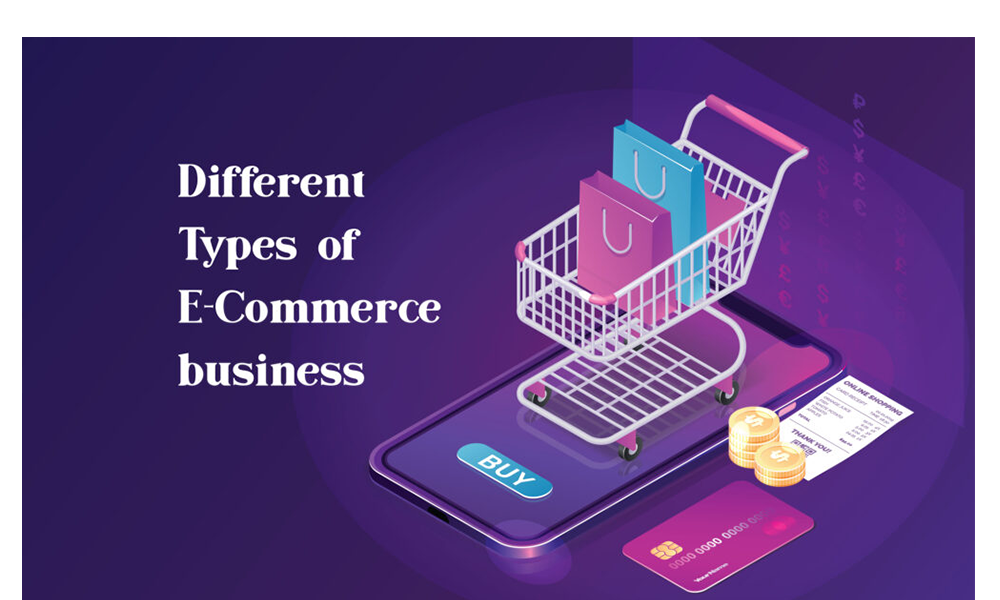Different types of e-commerce businesses
E-commerce, or electronic commerce, refers to the buying and selling of goods and services over the internet. The rise of the internet and digital technologies has transformed the way we shop and do business, and e-commerce has become an increasingly popular and important part of the global economy.
There are several types of e-commerce business models that companies can use, each with its own unique characteristics and advantages. In this blog post, we’ll take a closer look at the different types of e-commerce businesses and how they operate.
- Business-to-consumer (B2C): This type of e-commerce involves businesses selling products or services directly to consumers. Examples of B2C e-commerce include online retailers such as Amazon, eBay, and Target.
- Consumer-to-consumer (C2C): In this type of e-commerce, consumers sell products or services to other consumers, often through an online marketplace. Examples of C2C e-commerce include platforms like Etsy, eBay, and Depop.
- Business-to-business (B2B): B2B e-commerce involves businesses selling products or services to other businesses. Examples of B2B e-commerce include wholesale distributors and manufacturers selling to retailers.
- Consumer-to-business (C2B): In this type of e-commerce, consumers offer products or services to businesses, often through an online platform. Examples of C2B e-commerce include freelancers selling their services on platforms like Upwork or Fiverr.
- Business-to-administration (B2A): B2A e-commerce involves businesses selling products or services to government agencies or other organizations. This type of e-commerce is often used for procurement and supply chain management.
- Consumer-to-administration (C2A): In this type of e-commerce, consumers interact with government agencies or other organizations online to access services or information. Examples of C2A e-commerce include paying traffic tickets or filing taxes online.
-
Business-to-consumer (B2C)
Business-to-consumer (B2C) e-commerce involves businesses selling products or services directly to consumers. This is the most common type of e-commerce, and it includes online retailers such as Amazon, eBay, and Target. B2C e-commerce businesses typically have a large selection of products available for purchase, and they often use various marketing and advertising strategies to attract and retain customers.
One of the key advantages of B2C e-commerce is the ability to reach a large and diverse customer base. With an online store, businesses can sell to customers anywhere in the world, provided that there are no legal or logistical barriers to doing so. This can be especially beneficial for small businesses that might not have the resources to establish a physical presence in multiple locations.
Another advantage of B2C e-commerce is the ability to offer a personalized shopping experience. With the help of customer data and advanced technology, businesses can tailor their product recommendations and marketing messages to individual customers, increasing the chances of making a sale.
-
Consumer-to-consumer (C2C)
Consumer-to-consumer (C2C) e-commerce involves consumers selling products or services to other consumers, often through an online marketplace. Examples of C2C e-commerce platforms include Etsy, eBay, and Depop.
One of the main benefits of C2C e-commerce is that it allows individuals to sell products or services that they no longer need or use. This can be a great way to declutter and make some extra money, and it’s also a convenient way for buyers to find unique or hard-to-find items.
C2C e-commerce platforms also typically have a wide range of products available, as they allow individuals from all over the world to list their items for sale. This can be a great source of inspiration for people looking for new ideas or products.
One potential challenge for C2C e-commerce businesses is the need to build trust with customers. Unlike with B2C e-commerce, where customers are purchasing from established companies with reputations to maintain, C2C e-commerce involves transactions between individuals who may not know each other. To address this, many C2C e-commerce platforms have implemented various measures to ensure the safety and security of transactions, such as seller ratings and buyer protection programs.
-
Business-to-business (B2B)
Business-to-business (B2B) e-commerce involves businesses selling products or services to other businesses. This type of e-commerce is common in industries such as wholesale distribution and manufacturing, where businesses rely on a network of suppliers and customers to operate.
One of the main advantages of B2B e-commerce is the ability to streamline and automate business processes. With an online platform, businesses can easily place orders, track shipments, and manage inventory, saving time and resources that would otherwise be spent on manual tasks.
4. Direct-to-consumer (D2C)
Direct-to-consumer (D2C) refers to a business model in which a company sells its products directly to consumers, without using intermediaries such as retailers or wholesalers. This is typically done through the company’s own website or online platform, as well as through social media, email marketing, and other channels.
The D2C model has become increasingly popular in recent years, as it allows companies to have more control over their pricing, branding, and customer experience. By eliminating intermediaries, companies can offer their products at a lower price point and retain a larger share of the profits. In addition, the D2C model allows companies to build a direct relationship with their customers, which can be valuable for gathering customer feedback and building brand loyalty.
Examples of companies that use the D2C model include Warby Parker, Casper, and Dollar Shave Club. These companies have gained a reputation for offering high-quality products at competitive prices, and they have also been successful in building strong brand identities and loyal customer bases.

